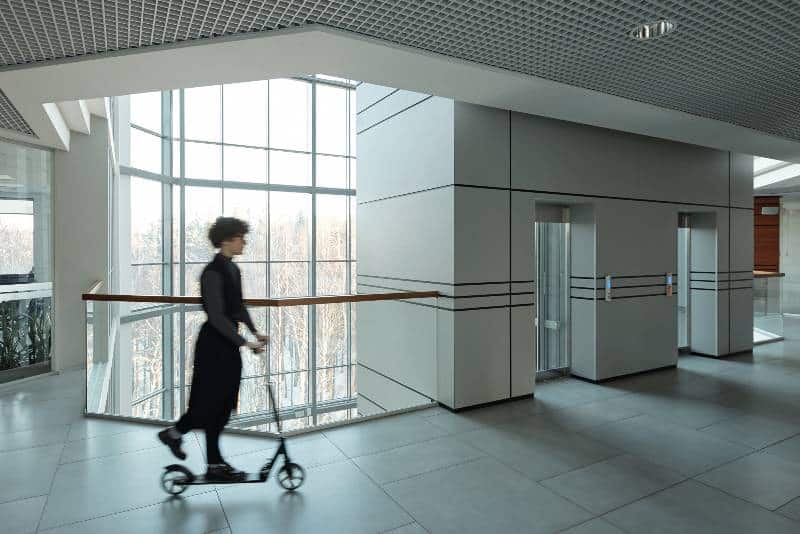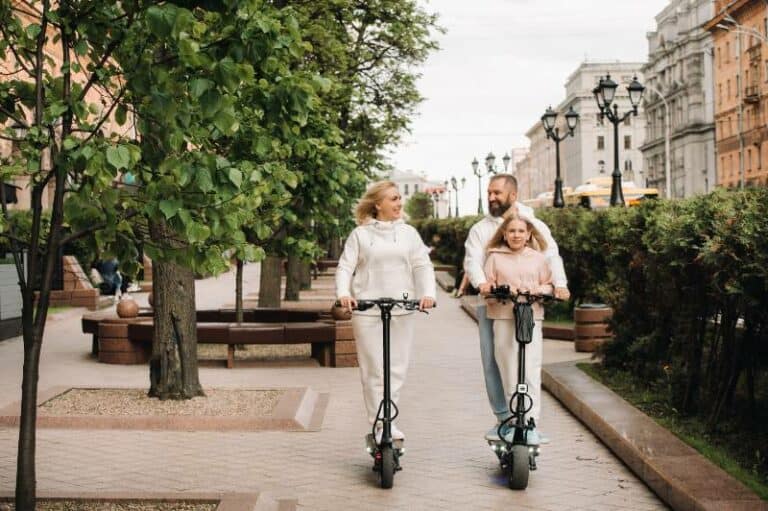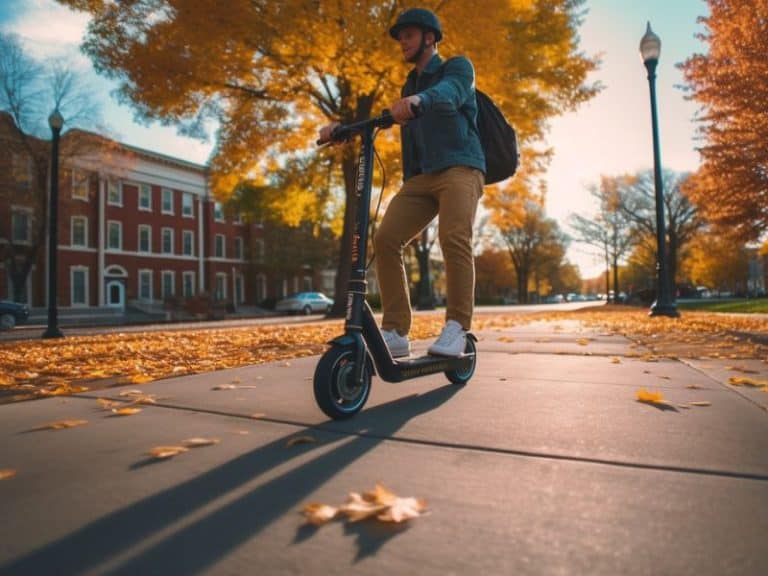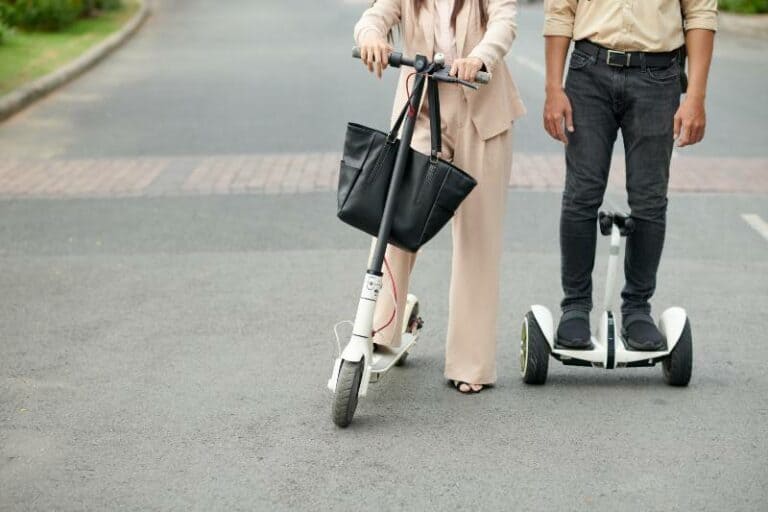Can You Bring An Electric Scooter On A Plane? Your Guide
Electric scooters have taken the world by storm in recent years. They are a great way to get around town, and they are especially useful for people who have to cover long distances. But, can you bring an electric scooter on a plane? In this blog post, we will answer that question and give you a guide on how to travel with your electric scooter.
You can’t bring most electric scooters for adults onto an airplane unless they are specifically designed for people with mobility issues.

Common airline rules regarding electric scooters on board
Without providing much information, several airlines simply ban the transportation of electric scooters.
Some do not specifically mention electric scooters, but they do state that they prohibit all self-balancing devices, electric bikes, hoverboards, and similar devices, implying that they do not permit scooters as well.
Some airlines claim that they are doing so to comply with a government-mandated limit on battery energy storage of 160 Watt-hours.
They state that they prohibit self-balancing personal transportation devices due to the Federal Aviation Administration’s (FAA) limit of 160 Watt-hours.
This is an American government organization, but the rule applies all over the world.
Battery allowance for electric scooters on airplanes
When planning to travel by airplane with an electric scooter, it is important to check the policies of the airline ahead of time. While some airlines do allow battery-powered scooters on board, others have strict prohibitions against them.
The reason for this difference is largely due to the differing policies of the Federal Aviation Administration (FAA), which sets restrictions on the amount of battery power that can be stored on board an aircraft.
As a result, some airlines have chosen to ban all self-balancing devices, electric bikes, hoverboards, and similar devices to stay within these FAA guidelines.
However, other airlines have found ways to comply with the FAA’s regulations while still allowing passengers to bring their electric scooters onboard.
As such, it is important to check with your airline before traveling to avoid any potential problems.
What Is Watt Hour (WH) And How To Calculate It?
Watt hours, or WH, is a measurement of how much energy a certain appliance uses over the course of an hour. To calculate watt hours, you simply need to multiply the number of watts an appliance uses by the number of hours you use it for.
So, if you have a 60W bulb and want to know how many watts it uses in 24 hours, your equation would be 60 watts x 24 hours = 1440 watt-hours. Watt hours can be useful when trying to estimate your monthly energy costs or compare the efficiency of different appliances.
List Of Scooters That Airlines Allow
You can transport your electric scooter on any of these six airline companies:
- Turkish Airlines
- S7 (Please use Google Translate to see the English version.)
- Qatar Airways
- Lion Air
- Air India
- Vietnam Airlines
Although there aren’t many companies that fly electric scooters, a few of these are rather large. Turkish Airlines is likely one of the best airlines to consider if you’re flying with an electric scooter.
They offer a variety of haven or stations and will most likely be your most satisfactory alternative to bring your electric scooter with you. They are probably the best option for European flights as well.
Qatar Airways is a widely popular airline that flies to many international destinations. If you’re looking for aviation in Asia and Europe, they are a good option, along with Turkish Airlines. Lion Air in Thailand is one of the local Asian airlines that has also started offering electric scooters as an alternative travel option.
So if you need to fly with your electric scooter, you have a few good options available to you.
Airlines That Allow Their Passengers To Bring Their Electric Scooters On Plane
When it comes to flying with an electric scooter, the situation can be a bit of a mixed bag. Several airlines maintain no detailed regulations concerning electric scooters, while others restrict them outright.
As a result, it’s always best to contact the airline directly to find out about their policies. However, most airlines do permit electric mobility conveyances on board, so that’s a good place to start.
The subsequent 10 airlines might or may not permit electric scooters aboard:
- China Eastern Airlines
- Hainan
- Việt Jet Air
- SpiceJet
- GoFirst
- Avianca S.A
- Fast Colombia S.A.S., synonymous with Viva Air Colombia and previously VivaColombia
- TAME or TAME EP
- TunisAir
- Kenya Airways
If an airline is not listed as being scooter-friendly, it’s likely that they simply don’t allow them on board. So if you’re planning on flying with an electric scooter, it’s important to do your research ahead of time to avoid any potential headaches at the airport.
Rules Followed By Federal Aviation Administration
According to the Federal Aviation Administration (FAA), electric scooters are allowed on planes as long as they have a battery size of fewer than 160 watt-hours (Wh). This is in line with the guidelines set by most airlines, which allow scooters with 101-160 Wh batteries. travelers are also allowed to carry up to two spare batteries/or a spare battery for their scooters.
However, it should be noted that finding an electric scooter with a battery capacity of less than 160Wh can be difficult, as most manufacturers express this capacity in ampere-hours rather than watt-hours. Nevertheless, following these guidelines should ensure that your electric scooter can be successfully transported on an airplane.
Is It Necessary To Inform Airline Officials About Electric Scooters?
Most people rely on some form of transportation to get around, whether it’s a car, bus, train, or bike. For those with mobility issues, however, traditional forms of transportation can be difficult or impossible to use.
Electric scooters have emerged as a popular alternative for people with limited mobility, providing an easy way to get around without having to rely on others. While electric scooters can be extremely helpful, it’s important to notify the airline in advance if you plan on bringing one on a flight.
This is because the battery in an electric scooter can pose a fire hazard if it’s not properly packed or stored. By informing the airline ahead of time, you can ensure that your scooter will be properly accommodated and that you won’t have any problems when you travel.
What Must A Passenger Do After Getting Permission?
All the passengers who have received permission from the airlines must come to the airport at least two hours before the scheduled time. This will help the passenger to get their electric scooter packed into their luggage.
Before bringing the electric scooter, it is better to dismantle it. Taking out its battery, handlebar, and seat will save you a lot of time that you will waste if you do not disperse it. Disassembling the scooter will help you keep the battery safe and dissuade it from leakage.
The passenger must ensure that the mortar is dry and not wet, as airlines will not accept wet batteries. Another precaution to take is to be aware of the battery type before arriving at the airport.
Going through the owner’s manual will certainly help you understand your scooter and how its components work. After packing your stuff, remember to charge your scooter as airlines do not allow devices with dead batteries on board. With all these in check, enjoy your flight!
How To Transport Your Electric Scooter?
Protecting Your Electric Scooter From Damage
When it comes to flying with an electric scooter, the most important thing is to make sure that the battery is properly protected. This means packing it in a way that will prevent it from being damaged or leaking.
The best way to do this is to remove the battery from the scooter and pack it in its own carrying case. This will help to ensure that the battery is protected from any potential damage.
It’s also important to make sure that the carrying case is clearly labeled with the word “battery.” This will help airport staff to identify it as a dangerous item and take proper precautions when handling it.
In addition to packing the battery in a carrying case, it’s also important to pack the scooter itself in a way that will prevent it from being damaged. This means wrapping it in bubble wrap or another type of protective material.
Once you have packed the scooter and battery, you can then place them in your luggage and check them with the airline.
Packing your electric scooter in a way that will prevent it from being damaged is important, but it’s also important to make sure that you have the proper documentation with you when you travel.
This includes a letter from your doctor explaining why you need to use an electric scooter, as well as any documentation from the airline that outlines their policies for traveling with an electric scooter.
Having this documentation with you will help to ensure that you have a smooth and hassle-free travel experience.
With more and more people using electric scooters, it’s important to know the ins and outs of flying with one. By following these tips, you can make sure that your scooter is properly packed and that you have all the necessary documentation with you. This will help to ensure a smooth and hassle-free travel experience.
Domestic Flights in the U.S.
The Federal Aviation Administration (FAA) only authorizes lithium-ion batteries up to 100-watt hours (Wh) in carry-on baggage and 160Wh in checked baggage due to the potential fire hazard they present.
However, many electronic devices, such as laptops, phones, and tablets, use lithium-ion batteries that fall under the 160Wh threshold.
As a result, travelers may be wondering if they can bring their electric scooter on a plane. The answer depends on the power of the scooter’s battery. Most electric scooters have batteries that are well above the 100Wh limit, making them ineligible for carry-on status.
However, there are some electric scooter models with small batteries that fall under this limit. Travelers should check with the airline before attempting to bring an electric scooter on a plane.
International Guidelines
There are a variety of lithium-ion batteries in use today, and the international guidelines around their transportation are constantly evolving.
The strictest regulations are typically reserved for air travel, due to the rare but serious possibility of batteries overheating and exploding mid-flight.
According to the International Air Transport Association (IATA), lithium-ion batteries are classified as “dangerous goods” and must adhere to a set of strict guidelines.
- Batteries that do not exceed 100Wh can be transported in either carry-on or checked baggage, without the need for operator approval.
- For batteries that exceed 100Wh but do not go beyond 160Wh, operator approval is required but they can still be transported in either type of baggage.
- batteries that exceed 160Wh are only permitted in checked baggage.
In an era of increasing global travel, air travel has become one of the most popular methods of transportation. Every day, millions of people around the world take to the skies in order to reach their destination. With such a large number of people traveling by air, it is essential to have guidelines in place in order to ensure the safety of both passengers and crew.
In addition, these guidelines help to create a standard of safety that is recognized and followed by airlines around the world. By following these guidelines, we can help to make air travel a safe and enjoyable experience for everyone involved.
Best airline-approved electric scooter
There are a lot of reasons to love flying. But let’s be honest: schlepping your luggage through the airport isn’t one of them. Now, there’s a solution that will make your life a whole lot easier – and it doesn’t involve paying a fortune for one of those sky-high baggage fees, either. Enter SmartScoot, the world’s lightest electric scooter that’s approved by most major airlines.
Weighing in at just under 40 pounds, this ultra-lightweight scooter can easily be stowed in the overhead compartment or checked as luggage. And with a top speed of 7 mph, it’s fast enough to get you where you need to go without breaking a sweat. Best of all, it folds up in seconds, so you can take it with you anywhere you go. Whether you’re jetting off on a business trip or Taking a leisurely vacation, SmartScoot is the perfect travel companion. So ditch the heavy suitcase and make your next trip a breeze with SmartScoot.
Best value airline-approved electric scooter
The aluminum alloy frame was designed for maximum durability and can support riders weighing up to 320 pounds. Because of the maintenance-free honeycomb tires that never go flat, the 8.5″ tires can handle the daily grind. With the touch of a button, use the SWAGTRON app to track speed, check map routes via GPS, engage cruise control, and activate the ultra-bright LED headlight.
The Swagger 5 Boost’s three-speed modes allow you to find your optimal speed limits as you cruise around town. The scooter also comes with a retractable kickstand and a built-in cargo rack, so you can easily take your belongings with you on the go. Whether you’re commuting to work or exploring your neighborhood, the Swagger 5 Boost is an ideal way to get around town. Thanks to its durable construction and reliable performance, this scooter is sure to provide years of trouble-free use.
Best airline-approved electric scooter for heavy adults
Swagtron Swagger 5 EV Rider is one of the best airline-approved electric scooters for heavy adults. It has an upgraded motor that gives riders enough power to travel up to 18 miles per hour. The battery can last up to 11 miles per charge and only takes 3.5 hours to fully charge.
The 8.5” honeycomb tires are maintenance-free and provide a smooth, puncture-proof ride. The Swagger 5 Boost can quickly be folded down with a foot-actuated folding mechanism for easy storage and portability. The SWAGTRON app is built-in and perfect for commuting. It allows you to track your rides, monitor your battery life, and more. Whether you’re looking for a leisurely ride or a way to get around town, the Swagger 5 EV Rider is a perfect choice.
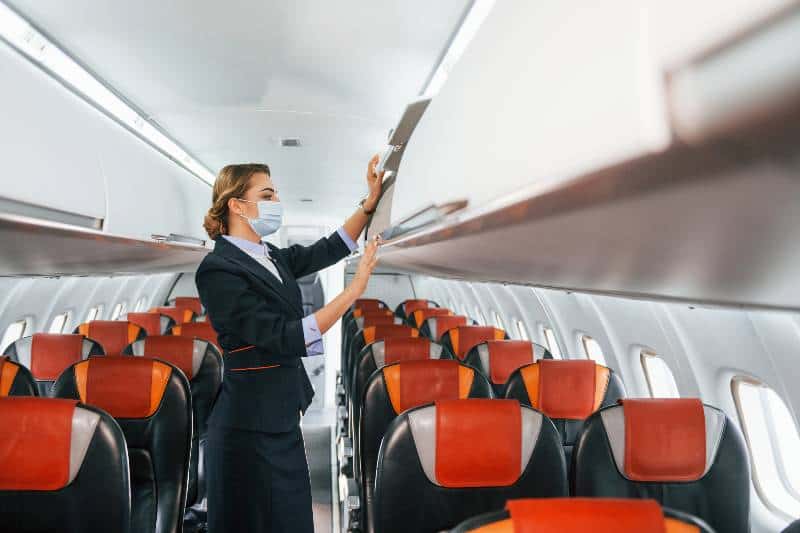
Can You Bring An Electric Scooter On A Plane FAQs
We get it. You’ve been looking to buy an electric scooter, but you’re not sure whether you can bring it onto the plane. We have all the answers you need right here!
Can I Take My Child’s Electric Scooter on a Plane?
Although it may seem like common sense, you have to follow the same steps to bring your child’s electric scooter on a plane as you would an adult model. First, always check with the airline ahead of time to see if they allow any type of scooter onboard.
Different airlines have different policies, so be sure to check before you travel. If your airline does not allow kid’s electric scooters onboard, you always have the option of renting one at your travel destination.
If you are lucky enough to be able to bring your child’s electric scooter on the plane with you, be sure to protect it from damage during the flight. Wrap it in bubble wrap or blankets and secure it so it doesn’t become a hazard during turbulence. With a little planning, you can make sure your child’s electric scooter comes along for the ride without any trouble.
Can you take scooters as hand luggage?
Many people now rely on scooters to get around, whether they have a disability or not. With the rise in popularity of electric scooters, there has been an increasing demand for scooters that can be easily transported, so that people can take them with them when they travel.
However, most airlines do not allow scooters to be carried on as hand luggage, and there are strict limits on what can be transported in checked baggage. There are a few exceptions, however, such as if the scooter is specifically designated as a mobility aid.
In general, it is best to check with the airline before traveling to see if they have any special requirements for transporting scooters.
Why are lithium batteries banned on airplanes?
Lithium batteries are a common power source for many devices, from cell phones to laptops. However, they are not allowed on airplanes due to the risk of explosion.
Lithium batteries are sensitive to changes in pressure and temperature, and the high altitude and diverse conditions inside an airplane can create an environment where they are more likely to malfunction.
In addition, the close quarters of an airplane cabin mean that any explosion would be highly dangerous for passengers and crew alike.
As a result, airlines have adopted strict policies against bringing a lithium-ion battery onboard. While this may be inconvenient for travelers with devices that use them, it is a necessary measure to ensure the safety of all onboard.
Conclusion
If you want to find out the answers to these and other questions, we highly encourage you to visit the official websites of each airline. That way, you will know how much your particular electric scooter battery size weighs and if it’s permitted on board airplanes. Don’t forget to check if your particular model is certified by TSA and FAA before purchasing it. After all, the best way to prevent headaches, frustration, and a whole lot of unnecessary expenses is by being prepared ahead of time! If you want to find out more about scooters, make sure to visit our website!
